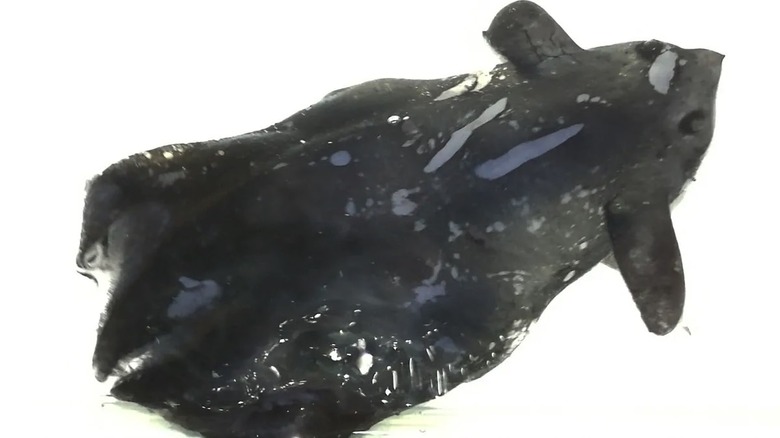Researchers Found A New Vampire Squid, But It's More Adorable Than Dangerous
Vampire movies have trained us to expect the worst out of any creature that has "vampire" in the name. We only have ourselves to blame for that, as the vampires from the movies don't exist in real life. Not only that, but we're apparently using that designator extremely loosely when naming certain creatures.
That's the case with vampire squids, which sound a lot more terrifying than they actually are. Researchers have found only the second such species of squid (Vampyroteuthis pseudoinfernalis in the wild that deserves that name.
Like the first variant (Vampyroteuthis infernalis), the new vampire squid will not suck anyone's blood to survive. That's not how they feed. But, interestingly enough, these vampire squids do not like the light. You know, like vampires.
If Vampyroteuthis infernalis would translate to "vampire squid from hell," the V. pseudoinfernalis would then mean "vampire squid from false hell"?
Well, naming aside, the new species has the same overall "design" as the first species. It has a dark color and cloak-like webbing between the arms. This makes the squids look like vampires wearing capes, hence the infamous naming choice.
When taken out of the water, the vampire squid looks like a dark gelatinous blob that hardly inspires any admiration. Show the squid in the top image to anyone; they probably won't be fond of it, even before knowing its name. After all, squids are usually fun and smart creatures to observe. The vampire squid? Not so much.
Researchers discovered the V. infernalis original in 1903 in a deep sea expedition. Since then, they thought they found other specimens, but they all turned out to be younger vampire squids of the same species.
However, researchers from the South China Sea Institute of Oceanology have released a study detailing the second species of vampire squid. Found in the South China Sea in 2016, V. pseudoinfernalis lives in what's called the "twilight zone" of the sea. That's at around 2,600 to 3,300 feet, where the light from the surface hardly reaches the water.
The reason these vampire squids spend their lives at that depth concerns their well-being. Most predators can't survive here due to the lack of oxygen. As a result, they're safer than at higher levels.
No matter what the scary name suggests, vampire squids are not predators. Rather than hunting anything else that might reach these levels, they eat leftovers from the higher levels. They consume dead animals, feces, plankton, and anything else falling from above.
Like vampires in the movies, they might be running from the light, but vampire squids can produce light to illuminate their surroundings. Their light-producing organs might also expel orbs of light to confuse a predator and disappear in the darkness.
The organs that produce light helped the researchers realize they found a new species. V. pseudoinfernalis has photophores halfway between the fins and the end of the body. The first vampire squid variant has these light-emitting organs placed a third of the way.
Also, the new species has a pointed tail, while V. infernalis doesn't get one. Then there's the different beak on the new species, which has a longer wing on the lower jaw.
Finally, genetic testing also proves this is a different species. Study lead author Dajun Qiu told Live Science the team plans to analyze more specimens to confirm that the two species are different.
You can check out the full study on bioRxiv for more details, including images and drawings.
